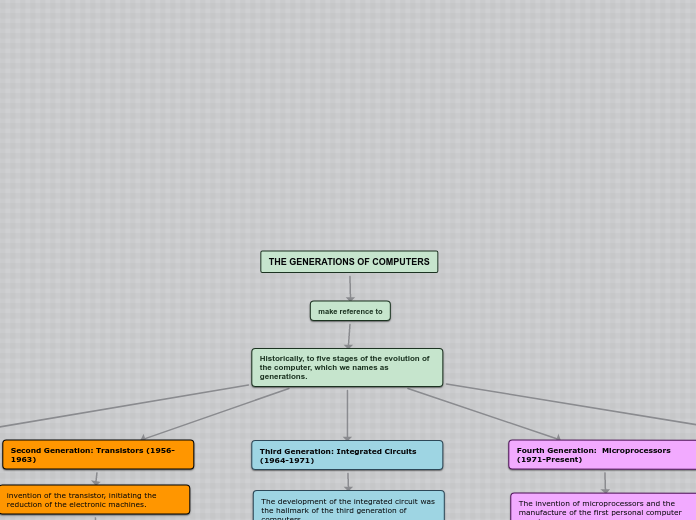THE GENERATIONS OF COMPUTERS
make reference to
Historically, to five stages of the evolution of the computer, which we names as generations.
First Generation: Vacuum Tubes (1940-1956)
invention of vacuum tubes, which was the propeller for transistors.
Characteristics: they depended on a lot of heat and had a short life, use of punch cards to supply program data, the first computer were UNIVAC and ENIAC.

Second Generation: Transistors (1956-1963)
invention of the transistor, initiating the reduction of the electronic machines.
Characteristics: the first computers of this generations were developed for the atomic energy industry, the transistor was far superior to the vacuum tube, allowing computers to become smaller, faster, cheaper, more and efficient.

Third Generation: Integrated Circuits (1964-1971)
The development of the integrated circuit was the hallmark of the third generation of computers.
Characteristics: users interacted with third generation computers through keyboards and monitors and interfaced with an operating system, Transistors were miniaturized and placed on silicon chips.

Fourth Generation: Microprocessors (1971-Present)
The invention of microprocessors and the manufacture of the first personal computer are given.
Characteritics: invention of the PC by IBM, increases storage capacity, intel's first microprocessor was conceived by Ted Hoff and Stanley Mazor, Fourth generation computers also saw the development of GUIs, the mouse and handheld devices.

Fifth Generation: Artificial Intelligence (Present and Beyond)
It begins with the implementation of artificial intelligence and the Aunomos mechanism.
Characteristics: are still in development, thought there are some applications, such as voice recognition, than are being used today, The goal of fifth-generation computing is to develop devices that respond to natural language input and are capable of learning and self-organization.

